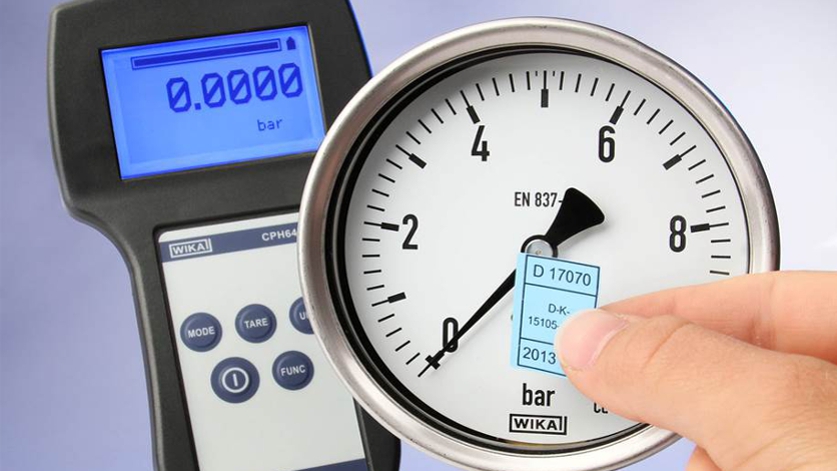There are two totally different types of self-observation. The first type is by far the most common – in fact, we all do it, just about all of the time. What we are talking about there is self-monitoring, or self-evaluation. Scientists and technologists refer to this as ‘negative feedback’. The way that negative feedback works is very simple: I monitor my behaviour (or my appearance) and then compare the data received with an internal standard (or criterion) to see whether my behaviour or appearance falls within the guidelines for what is ‘correct’ (i.e. within the limits of what is socially and/or personally acceptable); if it is okay, I don’t worry, and if it isn’t, then I immediately correct myself and check again.
This all happens very quickly, and we are not usually aware of each particular stage of the ‘checking up and correcting’ process. In fact, this is so much of a habit that we are generally not aware that we are doing it at all. The only time we pay attention, so to speak, is when we notice a discrepancy between our behaviour and how we want to behave, because this creates a feeling of alarm or concern. A simple example of this sort of thing would be when I am talking to someone and I notice that they are looking at me in a bit of a funny way. I go through all the possibilities of what might be wrong, furtively scanning myself, checking for this, checking for that, before I realize that there is a big stain of tomato ketchup and mustard on my shirt from the burger I had earlier. Another example is what sometimes happens in dreams, which is when I arrive at my workplace as usual when I check up on myself and notice to my horror that I have forgotten to get dressed and am in fact completely naked…
‘Negative feedback’ behaviour is both necessary and normal. However, there are times when it becomes a problem and at these times our inability to ‘drop’ the self-controlling behaviour can cause a great deal of distress. One instance is when an emotional reaction (such as grief, embarrassment or unhappiness) takes us out of the realm of the normal guidelines for behaviour. Actually, emotional states like these are of course perfectly ‘normal’ for what they are, but they are out of the range of normal self-controlled behaviour. When we get involved in ‘checking and correcting’ we get in trouble because I simply cannot control my behavioural output in the way that I would like. Maybe I can almost manage to look normal, but I know deep down that what I am afraid of showing is going to come out sooner or later, despite my best efforts. This is a very unpleasant predicament to be in, as everyone knows. Another time when self-evaluating is counterproductive is when we are depressed or anxious and we are keen to get better – keen to see any sign of progress. The trouble here is that my self-monitoring is actually trapping me in the situation that I want to escape, it is ensuring that I get well and truly stuck. The self-monitoring behaviour becomes compulsive, irresistible, and I end up trapped in a closed circle of self-watching – a claustrophobic and sterile world of anxiety, frustration and despair. Self-control turns out to be the same thing as ‘no change’.
RADICAL VERSUS TRIVIAL CHANGE
In general, self-evaluation is only good for managed change – change within the boundaries of ‘the known’. Managed change is in fact 100% effective at trapping us in the known because we never go beyond our expectations, and this means that managed change (or controlled change) is not actually change at all. It is like shuffling a pack of cards – all we get is a new combination of the same old factors, which is fine if we want to play a game of cards, but not so fine if we are fed up with card games and want to move on to something different. This brings us to the second type of self-observation. In the first type of self-observation, we are only interested in what we are doing because it might be wrong, which would mean that we would have to change it. This is ‘fear-based’ because we are afraid of not doing what we think we ought to be doing. We are afraid of being the wrong way. We’re afraid of not being normal. The other possibility here (which is the type of self-evaluating that is always looking for progress) is ‘greed-based’ rather than fear-based because we are greedy to change in the way we want to be changing. We are keen to ‘get it right’. Both of these possibilities come down to exactly the same thing, which is ‘curiosity-with-an agenda’.
In the second type of self-observation we are interested in the way that we are simply because that’s the way that we are. We’re interested on where we are simply because that is where we are. This is ‘curiosity-without-an-agenda’. Type-1 self-observation is based on the idea of gain – we are there watching because we want something (or because we don’t want something, which is the same thing). Type-2 self-observation has no thought of gain in it – it is naïve and innocent. We are watching as a small child watches, without any idea of getting something as a result. We’re just watching. Obviously, this is a very natural and uncomplicated thing to do, but it is also a rare state of mind for an adult because we are normally preoccupied with one concern or another, and when we have concerns (i.e. thoughts of loss or gain) then agenda-free curiosity goes right out of the window.
We may also explain Type-2 self-observation by saying that it basically comes down to ‘noticing’ – we notice (or see) the way that we are. This might sound like an easy enough thing to do but it isn’t. Suppose you tell me to go away and spend the day ‘noticing’ myself. “Fine” I say, “No problem. I can think of harder things to do…” Yet when it comes down to it I find that I am getting tied up in knots trying to do it – I end up forcing myself to do something that ought to be quite natural. The tendency is for me to want instructions on how to go about noticing my situation without interfering in it. “How do I do Type-2 self-observation?” I ask. Of course, the difficulty here is that I am still persisting in thinking that there is something to ‘do’, when the truth is that we do not do ‘seeing’. Seeing is not a deliberate or purposeful thing – it is ‘input’ unlike purposeful behaviour which is an intentional ‘output’. Seeing cannot be intentional in this sense because it is about receiving information. If I knew in advance what the information was that I was going to receive, then what would be the point in the exercise?
The way to tell the difference between purposeful and non-purposeful activity is by considering what we might call the ‘surprise factor’. When I perform an action on purpose my action ought not to come as a surprise to me. For example, I don’t get up to make a cup of tea and fry an egg instead. If I did, this would really put me out! On the other hand, I can be surprised by what I see, for the simple reason that I am not in control of what I see. However, having said this, we have to acknowledge that there is a tendency, which we all have, to only see the sort of things that we are expecting to see. This tendency is none other than our old friend ‘agenda-based curiosity’ (or ‘Type-1 self-observation), which basically comes down to us only focussing on stuff that we already know to be important.
For example, if I am a professional pick-pocket walking through a crowd of people then I am only going to only notice pockets. Because I am so engrossed in this, it is likely that I will miss all sorts of other things that are going on. This is due to the fact that I have, somewhere along the line, already made the decision regarding what is, and isn’t, important. In one way – from the point of view of my agenda – this is reasonable enough, but in another way this is absurd because unless I know everything that is ‘out there’ (and I don’t) how on earth can I come to a decision about whether it is important or not? How can I rule it out so decisively?
We can summarize everything that we have said by saying that Type-1 self-observation (which is self-monitoring) is good for optimising our performance in relation to a task that is totally defined in terms of its aims and which takes place within a known framework of reference. An example of this would be fixing a car engine, building a house, or making a cup of tea. A degree of self-monitoring is good – in fact essential – for all sorts of things such as driving a car, sewing a shirt, doing the washing up and cooking the dinner. It is good for managed (or trivial) change, which is change within known parameters. What self-monitoring cannot help us with is radical change, which is change that takes us beyond our normal boundaries. This is the type of change involved in psychological growth.
Fritjof Capra has suggested that there are two types of change, self-maintenance and self-transcendence. The first type is where we modify ourselves according to our idea about what is desirable and undesirable, and the second type is where we let go of all the ideas and prejudices that we might have and see where the process of spontaneous change (change that happens by itself) takes us. This is ‘natural growth’, as opposed to ‘self-development’.
TRAPPED IN THE MEASURING MIND
When we are suffering from anxiety or depression or OCD or any other neurotic disturbances, self-monitoring (or self-control) is the last thing that we need. Far from helping us, monitoring ourselves and measuring ourselves is the very root of our suffering. In neurosis we are fighting change, we are insisting on being in control of what goes on with us. The worse we feel, the less willing we are to let go the control and let go our ideas about what is good for us and not good for us. This state of mind is based upon measuring and counting – it is always greedy for gain, for ‘progress’ towards whatever goal I have in mind. The whole time I am watching for signs that the thing I fear is going to happen or, alternatively, that the security I am greedy for is not going to happen. I am ‘watching with an agenda’. I am watching with a very big agenda! The hidden problem with this is therefore that by trying to ‘count our way to freedom’ – i.e. by measuring our progress (or lack of it) – we get stuck in a very narrow and claustrophobic viewpoint. Counting dooms us to get nowhere, it traps us in ‘the measuring mind’.
I can’t tell myself not to monitor myself – that would mean ‘checking up on myself to make sure that I am not checking up on myself’! That would mean monitoring my monitoring. What I can do however is to witness my self-monitoring; I can notice (or see) what I am doing without evaluating what I am doing, or trying to interfere with what I am doing. For example, when I am anxious I notice that my mind has become skittish, desperately going from one thing to another in search of some ‘way out’. This noticing isn’t a ‘way out’, I don’t do it for a reason or for gain, I just notice the way that this is the way that I am – I notice that I am always looking for gain. I notice that I am looking for a quick solution, but this noticing isn’t a ‘quick solution’!
I can always do this, there is never a time when I cannot notice my own situation – no matter how bad or how ‘compulsive’ that situation is. And when I start unconditionally accepting the reality of where I am right now, without looking for a quick exit, then I am free from the trap of the measuring mind, which is only ever there because it is greedy for gain, or greedy to avoid loss. When it comes right down to it, the measuring mind has no interest whatsoever in reality as it is, it is only concerned with its narrow agenda, like the pick-pocket who is only concerned with pockets or handbags. Seeing is taking a step back from all that, and noticing how tied up we are, without immediately getting sucked into the futile task of trying to untie ourselves. The thing to remember is that there is no ‘doing’ in seeing. There is nothing to achieve because we’re seeing what’s already there!
WATCHING THE KETTLE
We cannot count our way to freedom because ‘counting’ is the prison. The rational mind insists on having everything on its own terms, or not at all. That’s the only thing it trusts. Itself is the only thing it trusts. The rational mind wants to proceed step-by-step, known procedure by known procedure. It wants everything to be cut-and-dried, by the book, tried and tested, accredited and authorized by the proper authorities. Yet when we proceed in this way we do not ‘proceed’ at all because we bring our prison along with us every step of the way. We’re trying to change – but we insist on being in control of this change every step of the way, otherwise we just don’t want to know. Essentially, we want the type of freedom that we can understand, but the type of freedom that we can understand isn’t freedom at all!
This is like trying to count to infinity: no matter how long we count for we are still just as far off as when we started. We never get anywhere, really. We’re just fooling ourselves. No matter how large a number we reach, it is still only a logical extension of our starting off number, which is to say – it is quantitatively but not qualitatively different. There is no discontinuity, there is no leap, there is no ‘quantum jump’. Counting is good for quantitative change all right but not in the least bit good for qualitative change. Counting is like raising a wall higher and higher by continually adding bricks – I will undoubtedly get a bigger and bigger wall this way (which might please me), but I will never get beyond that wall.
YOU CAN’T COUNT YOUR WAY TO FREEDOM
Counting, therefore, is no good for going beyond! Counting traps us in counting. I can’t count my way out of counting – which is to say, I can’t escape counting by yet more counting. Counting is as we have said a prison – it doesn’t lead to anywhere but more counting. There is no way to reach infinity by step-wise counting, and yet this does not mean that we cannot reach it; infinity exists, and so it must be possible to reach it. Actually, it is there all along. To talk about infinity might seem unrealistic, but it is really another way of taking about ‘no restrictions’, i.e. freedom (or ‘openness’). Just as I can’t measure or control my own happiness without destroying it in the process, so too I can’t count my way to freedom. I cannot reach freedom by proceeding by known steps, by involving myself in self-controlling and self-monitoring behaviour. Freedom is like a watched kettle – as soon as you stop watching the kettle it boils. In the same way, as soon we stop counting and measuring, we are already free.
Naturally enough, this statement doesn’t make any sense at all to the measuring, categorizing, calculating, analysing mind. The measuring mind will not accept that it is free unless it can measure its own freedom, which is to say, unless it can have the fact of its freedom proven to it on its own terms. It will not accept freedom unless it can achieve this freedom on its own terms – which is to say, in a way that it can understand. It wants to measure its own freedom, just as it wants to measure and regulate the process by which it becomes free!
But as soon as I try to ‘measure’ whether I am free or not (or whether I am progressing satisfactorily towards becoming free or not) then I am not free, because it is the measuring (and the narrow context taken for granted by the measuring) that constitutes my prison, my lack of freedom. As we have said, it is impossible to count our way to freedom, but we are always free to stop counting.






